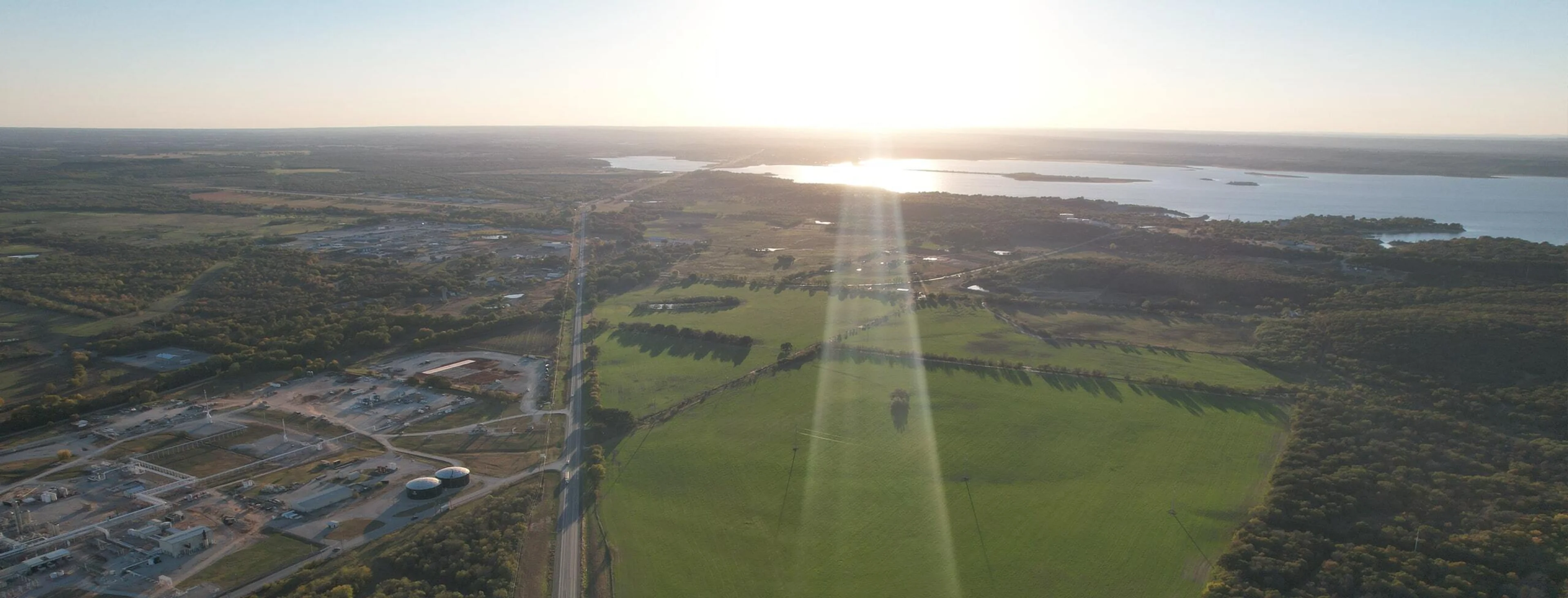Bringing down carbon.
And holding up sustainability.
Global demand for natural gas does not mean the industry can overlook its environmental responsibilities. BKV ardently believes that it remains the operator’s responsibility to drive environmental stewardship, minimize carbon emissions and employ leak detection and monitoring technology. Our work centers around the pursuit of one goal: safe and sustainable energy production for the world. We know our impact on the future of energy and we’re making one with sustainability at the forefront.

Each initiative brings us closer to our goals.
Facilitating Carbon Capture, Utilization and Sequestration (CCUS).
In 2023, the launch of the Barnett Zero facility marked a significant milestone in our investment in CCUS, a method of capturing and processing CO₂ before it is released into the atmosphere. This facility is among the first purpose-drilled, Class II commercial carbon sequestration wells in the nation, promising to help offset carbon emissions. And this is just the beginning.

Introducing Carbon Sequestered Gas (CSG).
Supported by our CCUS projects, CSG is made possible by our low-impact natural gas production. This innovative product is truly carbon-neutral, effectively mitigating the environmental impact of natural gas consumption. From production and gathering to boosting, transmission and distribution, CSG offsets Scope 1, 2 and 3 emissions.
Reducing emissions and enhancing operations.
Our Pad of the Future (POTF) program, launched in 2021, enhances existing operations and pad-level designs to reduce direct emissions while maintaining operational continuity. With approximately 3,200 wells completed, POTF is a triumph of today, eliminating estimated annual GHG emissions of approximately 520,000 metric tons per year of CO₂e.
Taking it one step further.
Lower-emissions energy from relentless ingenuity.
“Meaningful progress requires not just innovation, but the flexibility to address the practical challenges—like scalability.”
Scott Reaves, Senior Technical Services Foreman, BKV

If there’s one thing to be learned from BKV’s Pad of the Future program, it’s that ingenuity is an ongoing job necessity. In some ways, the program, which targets methane emissions, is a victim of its early success in effectively reducing Scope 1 emissions year-over-year. Now comes the challenge of scaling that success, applying innovation across BKV’s diverse assets in the Barnett and Northeast Pennsylvania (NEPA) amidst a shifting regulatory environment.
“We’ve picked much of the low-hanging fruit,” said Scott Reaves, BKV Senior Technical Services Foreman (Texas). Converting from natural-gas-powered pneumatic controllers to electric is easier on a large tract of land owned by one person. As BKV migrates into urban-adjacent areas, it’s a different story.
“Tapping into underground power, getting approval to go under a road, and so forth— the logistical hurdles can be a real challenge,” said Scott. “For one pad just outside of Fort Worth, it would have cost over $100,000 to run power 900 feet. So we have to think outside the box and try new approaches.”
To find an alternative power source, Scott’s team has turned to compressed liquid nitrogen and solar. The group even started building their solar skids in-house, deciding it made more sense than contracting a third party to directly control design and cost.
Sustainability must be economically viable or it can’t be sustained, a point not lost on the team. With a prudent yet creative approach, it achieved 200% of its emission reduction project goals for 2023. During the same period, similar sleeves were being rolled up in NEPA.
“Up here, we have to heat our gas to keep water in the stream from freezing,” said Bud Roszel, Facilities Engineer (NEPA). “The problem is, the gas processing units (GPUs) we use to heat the glycol-bath system created additional emissions. Between November and March, our GPU heaters ran at 100% uptime.”
To reduce those emissions, the NEPA team implemented a GPU Heat Trace Optimization project. Employing several equipment solutions, including one it engineered on its own to track heater run times and adjust temperature setpoints—keeping the system warm enough to remain operable without wasting heat.
“We aimed at reducing uptime to 20%,” said Bud. “In part due to a warm winter, we landed around 2-4% uptime, which basically took us from 29,000 metric tons of CO₂ down to under 1,000 metric tons.”
Scott and Bud acknowledge that the road to sustainability is evolving. Meaningful progress requires not just innovation, but the flexibility to address the practical challenges—like scalability—that follow. Both credit BKV with giving them the latitude to explore options and solve problems creatively.
“Way back in the beginning, no one thought about the environment,” said Scott. “Well, it’s a new day. And BKV has embraced it.”
